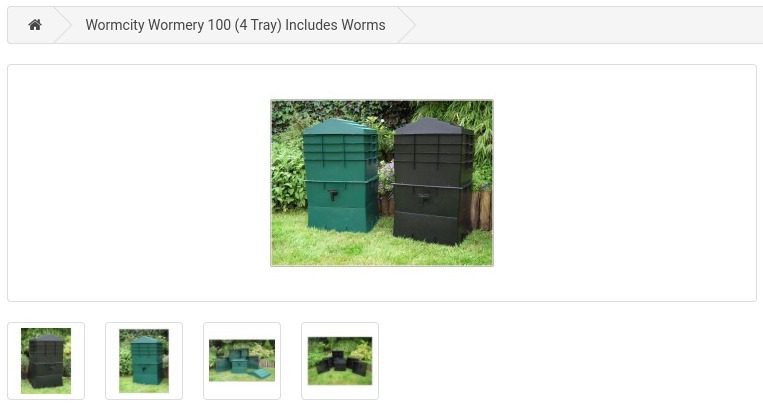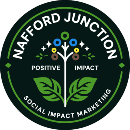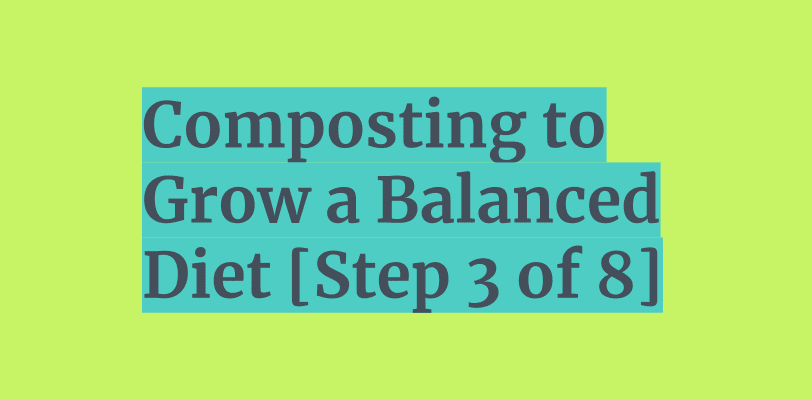Welcome to part 6 of our mini series on Conscious Buying Decisions to Help Climate Change. Last time we covered ‘Growing Your Own for a Healthy Diet’. This time we’re looking at ‘Composting to Grow a Balanced Diet’, which is also part of our series on Eating Sustainably.
You can find all content in this mini series at Mini Series: Conscious Buying Decisions to Help Climate Change.
If you already know that you have the power to help climate change and improve your health and happiness, here are the options to make conscious decisions when buying food and drink for a balanced diet:
- Check out #VoteWithOurMoney with 6 Steps to Help Stop Climate Change
- Try the Sustainability Roadmap with 40+ Solutions to Climate Change
- Use the Company Directory to Help You Grow, Eat, and Live Sustainably
If you want some more facts before making any decisions about a balanced diet, let’s get into the details:
Before we get started, it’s worth saying that this mini series is based on the Kiss the Ground Purchasing Guide. Many of the facts come from the book called Drawdown.
Find the Book Drawdown: The Most Comprehensive Plan Ever Proposed To Reverse Global Warming by Paul Hawken That You Can Find Here on Amazon*
There are 8 Steps To Eat for a Balanced Diet and the Climate:
- Knowing Your Food Source
- Growing Your Own
- Composting
- Choosing Meat That’s Regenerating Land
- Choosing Dairy That’s Regenerating Land
- Buying Seafood to Help Revitalise the Ocean and Ecosystems
- Knowing Your Annuals and Perennials
- Going Beyond the Healthiest Foods
In this piece we’re looking at step 3, Composting for a Balanced Diet.
Before you think that composting isn’t for you because you don’t have a garden or enough space, check out this video on The Compost Hack with Amy Smart:
Composting is an excellent way to stop food and garden waste going to landfill. It’s also a great way to grow like nature: Nature wastes nothing with microorganisms and bigger insects and animals turning your food and garden waste into compost that will give your soil a natural organic boost to help grow nutrient-dense food for a balanced diet.
Composting fertilises future plants, clears space in landfills, and dramatically reduces your personal greenhouse gas emissions.
Over 51% of the rubbish going to landfills is compostable, including food scraps, paper, garden waste, and wood.
Unfortunately, the environmental costs of food waste worldwide are staggering: 3.3 billion metric tons of carbon dioxide is released into the atmosphere each year through the production, harvesting, transporting, and packaging of (ultimately) wasted food.
Even more troubling: once food waste reaches the landfills, it begins to decompose and emit methane gas. Methane is a greenhouse gas that’s 21 times more potent than carbon dioxide. Making it hugely important to reduce methane emissions in the fight to reverse global warming.
Check out The Compost Story video to find out what would happen if we diverted the 60 billion pounds of mineral-rich food materials that go to landfills each year in the U.S. alone, and turned them into compost.
By reducing food waste by just 50% by 2050, we could stop 26.2 gigatons of carbon dioxide (that means 26.2 billion or 26,200,000,000) from entering the atmosphere! Less land is cleared for farming (keeping an additional 44.4 gigatons of carbon in the ground).
The best solution is to only buy the food that you’ll use, however, that’s not always possible, and you’ll always be left with some food scraps such as vegetable peel or coffee grounds. You can consider:
- Saving your vegetable peelings etc to make soup
- Composting your food, egg shells, bones, and kitchen waste
I compost dry waste at the allotment (including egg shells, bones, and waste from the vacuum cleaner…) and mix it with grass clippings and other garden waste. When I have egg shells and bones I put them in the bottom of the oven when I’m cooking something else then leave them in the turned-off but warm oven for a total of 3-hours so they go brittle and can be easily crushed. For wet food waste that we can’t reuse, I have a Wormery 100 from Wormcity* that creates compost, called vermicompost.
Find the Wormery 100 Here From Wormcity*:

How To Compost at Home
Instead of adding synthetic fertilisers that bypass the natural process and lead to negative impacts (such as breaking the symbiotic relationship between soil microorganisms and plants, and the synthetic fertiliser turning to nitrous oxide; that pollutes our waters and is a greenhouse gas that’s 300 times more potent than carbon dioxide), composting allows nature, in the form of microorganisms and larger soil life like worms, to break down the materials, reuse the nutrients, and turn them into a form that plants can consume.
You can compost food, paper, garden trimmings, wood, and other materials to reduce your carbon footprint, and help to regenerate healthy soil to grow food for a balanced diet.
Layer “browns” (dead leaves, twigs, paper) with “greens” (grass clippings, food scraps, coffee grounds) in a compost pile or bin to cycle nutrients back into the earth ready to be consumed by plants (then people and animals).
Composting Basics
Whether you build a large compost heap all at once, or add food scraps each day, the basic components are the same: mix of greens (adds nitrogen), browns (adds carbon, the building block of all life on earth), air (beneficial microorganisms and soil life like to breath), and water (keep it moist to help the micro life turn waste into life giving compost).
Your Compost Is Ready to Help Grow Food for a Balanced Diet
I usually have two compost heaps so that each year I’m building one and using another. That said, after 3 to 4 months the bottom of your compost heap should be ready to use (it depends if the heap has been there for at least 1-year because that can improve the soil under the heap so you have worms and microorganisms ready to travel up into the heap to quickly convert the waste).
You’ll know when the compost is ready because the starting materials will be unrecognisable; they will have turned into a dark chocolate brown colour and will smell like a forest floor after rain. Nice. Thanks nature!
If you can’t make compost at home, check if you can buy it from your local refuse site (here is one example of the council Household Recycling Centre at Pershore) or buy it from a local garden centre or shop.
As your soil improves, you’ll use less water and you won’t need fertilisers or pesticides. If you’re growing food, it will taste better, be more nutritious, and be hyperlocal!
That’s it for this piece looking at composting to help grow food for a balanced diet. You can find the next piece ‘Choose Meat and Dairy That’s Regenerating Land to Help Our Planet’ as well as all articles in this 10-part mini series at Conscious Buying Decisions to Help Climate Change.
Want To Get Updates About This Mini Series?
You can get updates about this mini series by Subscribing to Our Newsletter, Subscribing to Our Podcast, or Subscribing to Our YouTube Channel.
Suggested Reading
If you like the topic of this mini series, you might be interested in these reading suggestions with links to each book on Amazon.
Find Kiss the Ground by Josh Tickell Here on Amazon*
Find Soil Will Save Us by Kristin Ohlson Here on Amazon*
Find Soil, Grass, Hope by Courtney White Here on Amazon*
Find Dawn Again: Tracking the Wisdom of the Wild by Markegard and Doniga Here on Amazon*
Find Diet for a Hot Planet by Anna Lappé Here on Amazon*
Find Growing a Revolution: Bringing Our Soil Back to Life by David Montgomery Here on Amazon*
Here Is What You Can Do
- Use this mini series to help you buy products that help people and planet
- Check out #VoteWithOurMoney with 6 Steps to Help Stop Climate Change
- Try the Sustainability Roadmap with 40+ Solutions to Climate Change
- Use the Company Directory to Help You Grow, Eat, and Live Sustainably
- Be inspired. We can help climate change if we do something about it
- Talk to your friends and colleagues
- Share this with others
Want to Continue Your Journey?
Where Next?
There is so much inspiring information to give you ideas of how to help climate change by growing, eating, and living sustainably, you can:
- Read Our Articles
- Sign-Up to Our Free Email Newsletter
- Get Started and Vote with Your Money
- Try the Sustainability Roadmap
- Use the Company Directory
- Support Nafford Junction
Help Us Inspire Others
If you are passionate about helping climate change, please consider supporting Nafford Junction, you can:
- Become a Patron to Give Regular Contributions
- Buy Me a Coffee to Make a One-Off Contribution
- Create for Us and Publish Thought Provoking Content
- Become an Inspiring Leader and Advertise with Us
- Go to NaffordJunction.co.uk/support
Sources Used to Create This Mini Series
- Mini Series: Conscious Buying Decisions to Help Climate Change
- #VoteWithOurMoney with 6 Steps to Help Stop Climate Change
- Sustainability Roadmap with 40+ Solutions to Climate Change
- Company Directory to Help You Grow, Eat, and Live Sustainably
- Kiss the Ground – Official Movie Trailer (2020)
- About Regenerative Agriculture and How It Helps Climate Change
- Regenerative Organic Certification: Farm like the world depends on it
- The Soil Story by Kiss The Ground
- GMOs, Glyphosate & Gut Health
- Why I Left My Job To Help Inspire Sustainability
- Soil Can Reverse Climate Change
- Find Drawdown: The Most Comprehensive Plan Ever Proposed to Reverse Global Warming book here on Amazon*
- Gabe Brown: Keys To Building a Healthy Soil
- Abel & Cole: Organic food delivery. Organic vegetable boxes, fruit, meat & more
- Abel & Cole SPECIAL OFFER
- Find the Farmhouse Kitchen Book Here on Amazon*
- Find the River Cottage Fermentation Handbook Here on Amazon*
- Farmer Dan Kittredge on healthy foods – Kiss The Ground
- Find the Biodynamic Gardening Book Here on Amazon*
- Find the Latest Maria Thun Biodynamic Calendar Here on Amazon*
- Seed Co-operative
- Delfland Nurseries
- COMPOST HACK with Amy Smart – Kiss The Ground
- The Compost Story (Full Video) by Kiss The Ground
- How to Compost at Home
- Greg Judy VABF 2011
- Where to Buy Grass-fed Beef & Lamb
- Eggs & Poultry
- City Grazing (goats in the city) – Kiss The Ground
- Mark Shepard, regenerative farmer – Kiss The Ground
- Regenerative Organic Certification: Farm like the world depends on it
- PFLA leads new consortium asking for CLEAR and transparent food labelling
- Lye Cross Farm – Farmers and Cheesemakers
- LyeCrossFarm_720 on Vimeo
- Marine Stewardship Council: Sustainable Fishing | MSC
- Sustainable Seafood Coalition
- Sustainable seafood | Ocean emergency
- ‘The True Cost’ – Official Trailer
- COSMOS Organic | Beauty & Wellbeing
- COSMOS | Natural and Organic Certification For Cosmetics
- How to Avoid Plastic Pollution with Reusable Coffee Cups & More
- Alter Eco compostable food packaging – Kiss The Ground
- Eat Dirt, by Dr Josh Axe*
- How regenerative farming can help heal the planet and human health | Charles Massy | TEDxCanberra
- THE POWER of the PLATE
- Corporate studies asserting herbicide safety show many flaws, new analysis finds
- How regenerative farming can help heal the planet and human health | Charles Massy | TEDxCanberra
- Kiss the Ground by Josh Tickell*
- Soil Will Save Us by Kristin Ohlson*
- Soil, Grass, Hope by Courtney White*
- Dawn Again: Tracking the Wisdom of the Wild by Markegard and Doniga*
- Drawdown: The Most Comprehensive Plan Ever Proposed to Reverse Global Warming by Paul Hawken*
- Diet for a Hot Planet by Anna Lappé*
- Cows Save the Planet: And Other Improbable Ways of Restoring Soil to Heal the Earth by Judith D. Schwartz*
- Growing a Revolution: Bringing Our Soil Back to Life by David Montgomery*
Production Notes
This was produced by me, James Walters, as a personal project to help stop climate change by inspiring others to grow, eat, and live sustainably.
Any advice given is the opinion of those involved and does not constitute medical, financial, or legal advice.
* We include links we think you will find useful. If you buy through those links, we may earn a small commission. It’s one way to support our work and to inspire as many people as possible.









